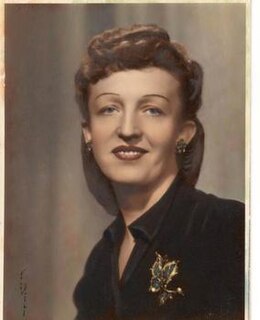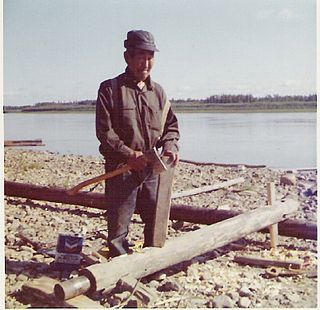 W
WGeorge M. Ashford was a US civil engineer and surveyor. He was one of the pioneers of Northern Alaska. He was the first man of his profession to arrive in Nome.
 W
WEvangeline Atwood (1906–1987) was an American historian, activist, and philanthropist. She was the co-founder of numerous organizations in Alaska, including the Alaska Statehood Association, the Anchorage League of Voters, the Alaska World Affairs Council, Parent-Teacher Council of Anchorage, and the Cook Inlet Historical Society. In 2009, she was named to the Alaska Women's Hall of Fame. Her husband was Robert Atwood and was the co-owner, alongside him, of the Anchorage Times.
 W
WAnna Fisher Beiler was a British-born American missionary and newspaper editor, who engaged in temperance, missionary, and philanthropic work. Associated with the Methodist Episcopal Church, she served as Secretary of the Bureau for District of Alaska. She thoroughly identified herself with this work, and visited the region in 1897, that she might do better at directing it. She made an extended tour in the service of that region in the interests of the Woman's Foreign Missionary Society of the Methodist Episcopal Church, and supervised the erection of the building in Unalaska. Beiler was a prominent officer of the Woman's Home Missionary Society for many years and influential in the shaping of its policy and work. She lectured on Alaska in many states, increasing the public interest.
 W
WJames Carroll was an Irish American steamboat captain who brought the first large steamboat to Alaska.
 W
WJohn Philip Clum was an Indian agent for the San Carlos Apache Indian Reservation in the Arizona Territory. He implemented a limited form of self-government on the reservation that was so successful that other reservations were closed and their residents moved to San Carlos. Clum later became the first mayor of Tombstone, Arizona Territory, after its incorporation in 1881. He also founded the still-operating The Tombstone Epitaph on May 1, 1880. He later served in various postal service positions across the United States.
 W
WCrow Village Sam was a Yup'ik Alaskan Native who lived in the mid Kuskokwim River valley in Alaska.
 W
WHenry Wood Elliott was an American watercolor painter, author, and environmentalist whose work primarily focused on Alaskan subjects. He was the author of the 1911 Hay-Elliott Fur Seal Treaty, the first international treaty on wildlife conservation.
 W
WWalter Harper (Koyukon) was an Alaska Native mountain climber and guide. On Saturday, 7 June 1913, he was the first person to reach the summit of Denali, the highest mountain in North America. He was followed by the other members of the small expedition team, guide Harry Karstens, Episcopal archdeacon Hudson Stuck, who had organized the effort, and Episcopal missionary Robert Tatum.
 W
WCornelia Hatcher (1867–1953) was an American suffragist and temperance activist. In 2009, Hatcher was named to the Alaska Women's Hall of Fame.
 W
WSheldon Jackson was a Presbyterian minister, missionary, and political leader. During this career he travelled about one million miles and established more than one hundred missions and churches, mostly in the Western United States. He is best remembered for his extensive work in Colorado and the Alaska Territory, and for his efforts to suppress Native American languages.
 W
WNellie Neal Lawing (1874-1956), known as Alaska Nellie, was an Alaskan frontierswoman, roadhouse operator, and hunter. Born in Missouri, Lawing moved to Alaska in 1915 after leaving her first marriage. She worked as a camp cook until the next spring, when she won a government contract to open a roadhouse along the Alaska Railroad. Her first roadhouse was located at Mile 45 of the railroad, an area which she named Grandview; while at the roadhouse, she gained a reputation as a hunter and dog sled musher and became a local hero after saving a mail carrier in a blizzard. She later ran the Kern Creek Roadhouse and a roadhouse in the Hurricane area. While working at the latter roadhouse in 1923, she met then-U.S. President Warren G. Harding, members of his cabinet, and Alaska Governor Scott Bone, who were traveling the railroad to honor its completion.
 W
WJohn Beaver Mertie Jr. (1888–1980) was a geologist for the USGS and a professor at Johns Hopkins University. He spent 30 years mapping Alaska in the early 1900s, so much so that a mountain range was named in his honour in 1986: the Mertie Mountains located in the Yukon–Charley Rivers National Preserve. The mountains extend 187 kilometres (116 mi) by 176 kilometres (109 mi), from the Tanana River to the Yukon River; the United States Board on Geographic Names' dedication to Mertie read he "did pioneering geologic studies in Alaska for over 40 years, with a major portion of the studies pertaining to the area of these mountains".
 W
WMatilda Kinnon "Tillie"' Paul Tamaree was a Tlingit translator, civil rights advocate, educator, and Presbyterian church elder.
 W
WEdward Lawrence Schieffelin (1847–1897) was an Indian scout and prospector who discovered silver in the Arizona Territory, which led to the founding of Tombstone, Arizona. He partnered with his brother Al and mining engineer Richard Gird in a handshake deal that produced millions of dollars in wealth for all three men. During the course of Tombstone's mining history, about US $85,000,000 in silver was produced from its mines.
 W
WWilliam Henry Seward was United States Secretary of State from 1861 to 1869, and earlier served as governor of New York and as a United States Senator. A determined opponent of the spread of slavery in the years leading up to the American Civil War, he was a prominent figure in the Republican Party in its formative years, and was praised for his work on behalf of the Union as Secretary of State during the Civil War.
 W
WJefferson Randolph "Soapy" Smith II was an American con artist and gangster in the American frontier.
 W
WJohn Reed Swanton was an American anthropologist, folklorist, and linguist who worked with Native American peoples throughout the United States. Swanton achieved recognition in the fields of ethnology and ethnohistory. He is particularly noted for his work with indigenous peoples of the Southeast and Pacific Northwest.
 W
WSamuel Hall Young, more commonly known as S. Hall Young, was an American clergyman.